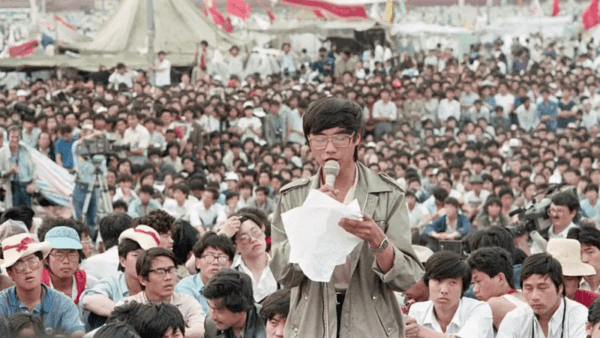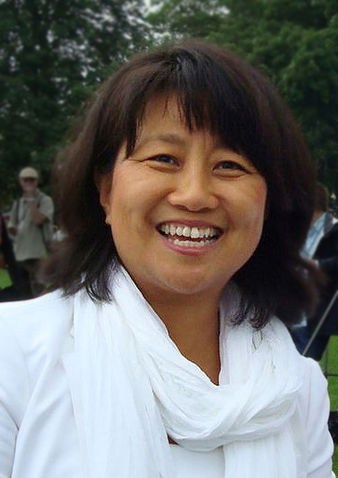Tiananmen Square 35 Years After the Massacre

By Javier Herrera
HAVANA TIMES – It was June 5, 1989, and a solitary man, armed only with two shopping bags, stood in front of an entire column of T59 war tanks from the Army of the People’s Republic of China. With a resolute gesture, he made the universal signal to stop with his hand raised. After the war machine could not bypass him and the deadly column halted, the man climbed onto the lead tank and conversed with one of the crew members. Soon, plainclothes agents detained the brave man and took him away to an unknown location. To this day, he is known only as “The Tank Man” or “The Unknown Rebel,” as he was named by Time magazine, which included him as one of the 100 most influential people of the 20th century.
The image at the top of this article was captured on June 5, 1989, by four photographers from the balconies of the Beijing Hotel, 200 meters from the square, with the most famous one taken by Jeff Widener (US) for the Associated Press. Widener had to hide the film to avoid a police search that could confiscate all photographic material that could serve as evidence, as had happened the night before with material on the repression of student demonstrators. After evading the police, he managed to get the images to his office by the end of the day, and in this way, the world learned about the terrible events unfolding.

The protests occurred in the context of economic growth due to the economic liberalization policies implemented since the late 1970s by China’s President Deng Xiaoping. In the mid-1980s, university students and other sectors dissatisfied with the authoritarianism and corruption of Chinese communism began to demand political freedoms and social and individual rights.
In 1987, the General Secretary of the Chinese Communist Party, Hu Yaobang, was forced to resign for being considered unable to control the student protests. Soon, the students adopted the deposed leader as a symbol and began a series of hunger strikes and demonstrations that were supported by broad sectors of the population.
The climax was reached when the students, camped in Tiananmen Square, paid tribute to Hu Yaobang, who had died of natural causes, by inaugurating a statue called “The Goddess of Democracy” in the square, right in front of an immense portrait of the Supreme Leader of the People’s Republic of China, Mao Zedong.
Tyrannies fear symbols and ideals. In the name of symbols and ideas, people go to the ultimate consequences, they sacrifice themselves. The student challenge exceeded the tolerance of the Chinese regime, which, facing the dilemma of moderation and dialogue or intolerance and repression, chose the latter.
On the night of June 3, the limitless repression began. One of the most powerful armies in the world marched against students armed with stones, Molotov cocktails, and ideas, with all the rage despots exhibit against rebellious people. Not content with firing indiscriminately with heavy-caliber weapons, they used tanks.
The streets and avenues leading to the square turned into rivers of youthful blood shed by the army that claimed to protect them. The stoic students endured the massacre, using the only thing they had to confront them: their bodies, their lives…
Seeing that they still did not give up, they decided to use the tanks. The youths lying in the square, camped in tents, faced the onslaught of tanks advancing unyieldingly over their bodies. Those who tried to flee were hit by shrapnel from the bombardment on the statue of democracy.

Great efforts were made by the student leadership to dissuade them from futile sacrifice. Attempts to negotiate with the regime were unsuccessful. The only options were to die or escape. After rivers of blood, the students chose to live. The persecution became relentless, hunting down recognized leaders and demonstrators.
The exact number of victims may never be known. Chinese totalitarianism has taken care of erasing the records. According to the government, there were only 241 mortal victims among demonstrators and soldiers. Other sources estimate the figures to be over 4,000 and could reach the horrifying number of 10,000, not counting the injured.
The following are the words of the exiled student leader in the United States, Chai Ling, leader of the pro-democracy student movement in Beijing, known as the general commander of the Tiananmen headquarters:

“At 10 p.m., the Democracy University of Tiananmen Square was officially inaugurated. Vice general commander Zhang Boli was appointed president. People congratulated us on the establishment of the Democracy University. The headquarters then began to receive emergency messages continuously. The tension was rising…
On Changan Street, blood was flowing like a river…
The soldiers of the 27th army used tanks, assault weapons, and bayonets (the time for tear gas had passed) against people who had only shouted a slogan or thrown a single brick…
The chests of all the dead were soaked in blood. Our classmates ran to the headquarters with blood on their hands, chests, and legs…
After 10:00 p.m. on June 3, the headquarters called for calm…
The students sat in the square in silence, lying down, waiting for the sacrifice. At that moment, from the loudspeakers of the headquarters tent and the external speakers, the song “The Descendants of the Dragon” could be heard…
On the morning of June 4, the headquarters decided to mobilize the students, who were reluctant to leave. The front line was the most determined, and those behind thought they would remain silent even when the front line of students was attacked and killed…

The students sang “The Internationale”… and went to negotiate with the army, saying: “We will leave the square, but we hope you will guarantee the safety of the students. We will leave peacefully”…
But the soldiers with combat helmets and machine guns rushed towards the monument platform…
They were shooting at the monument. The rest of the students began to withdraw. Some thought the troops would only arrest them, but the tanks started to run over the students lying in tents. Subsequently, the troops sprayed gasoline on the bodies, turning them into torches…
The symbol of the pro-democracy movement, the Goddess of Democracy, was toppled by a column of tanks…
Some say more than two hundred students died; others say four thousand died in the square. To this day, I still do not know the exact number…
The students wanted to return to the square to protest such brutality, but the citizens dissuaded us from doing so…
When the last lines of students who had withdrawn from Tiananmen Square reached Peking University, this marked the forced end of our movement…
Later, we learned that at 10:00 p.m. on June 3, Li Peng (Prime Minister of the People’s Republic of China) had given three orders:
1. The armed forces could open fire.
2. Military vehicles must enter the city at full speed and reclaim the square before dawn on June 4.
3. The organizers and leaders of the movement had to be killed, without exception.”
The Aftermath
The repression lasted months, years, and continues to this day in 2024. 35 years after the criminal event, many of the protest participants have been imprisoned during the days around the anniversary. The Mothers of the Tiananmen Massacre Victims movement have faced special repression. Those who have not managed to escape into exile still suffer surveillance, detention, and threats from Chinese intelligence and police agencies.
Despite the deafening silence imposed by the top leadership of the Chinese Communist Party on the events, a silence shared by other countries governed by communist or leftist totalitarian parties such as Cuba, Venezuela, or Nicaragua, history is there and marks them as criminals.
As Pablo Neruda said: “They can cut all the flowers, but they cannot stop the spring”…
The Chinese people and all those who live under the boot of a dictatorship will one day be free and will honor the martyrs of freedom, as the free world does today with those who fell more than three decades ago in the sadly historic Tiananmen Square.





